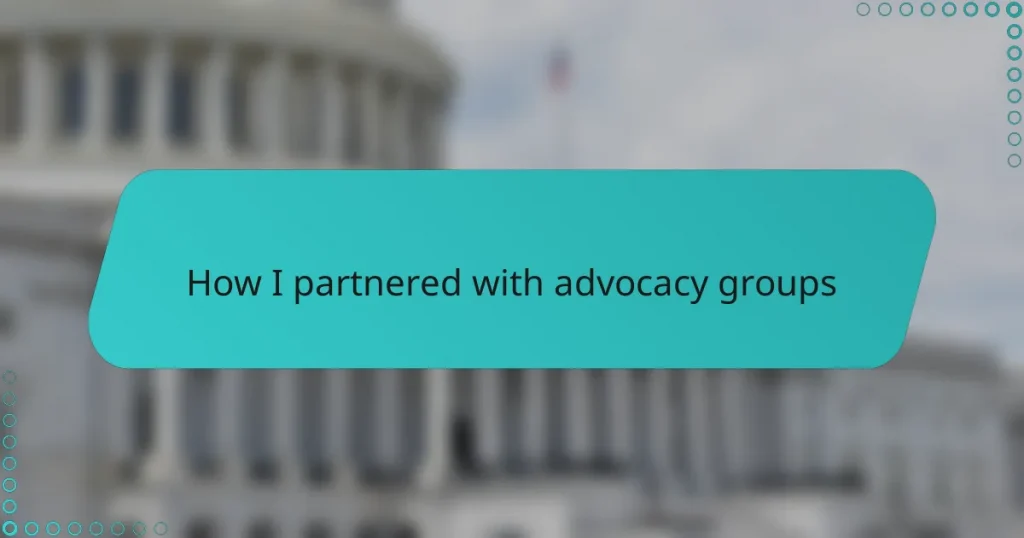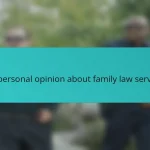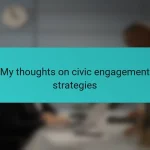Key takeaways
- Legal advocacy empowers individuals by giving a voice to the marginalized, focusing on human stories behind legal battles.
- Choosing the right advocacy partners involves shared values, a strong track record, and mutual trust for effective collaboration.
- Building relationships with advocacy organizations relies on genuine communication, flexibility, and respect for each other’s priorities and capacities.
- Measuring partnership impact should blend quantitative data with personal stories to truly understand the change created.
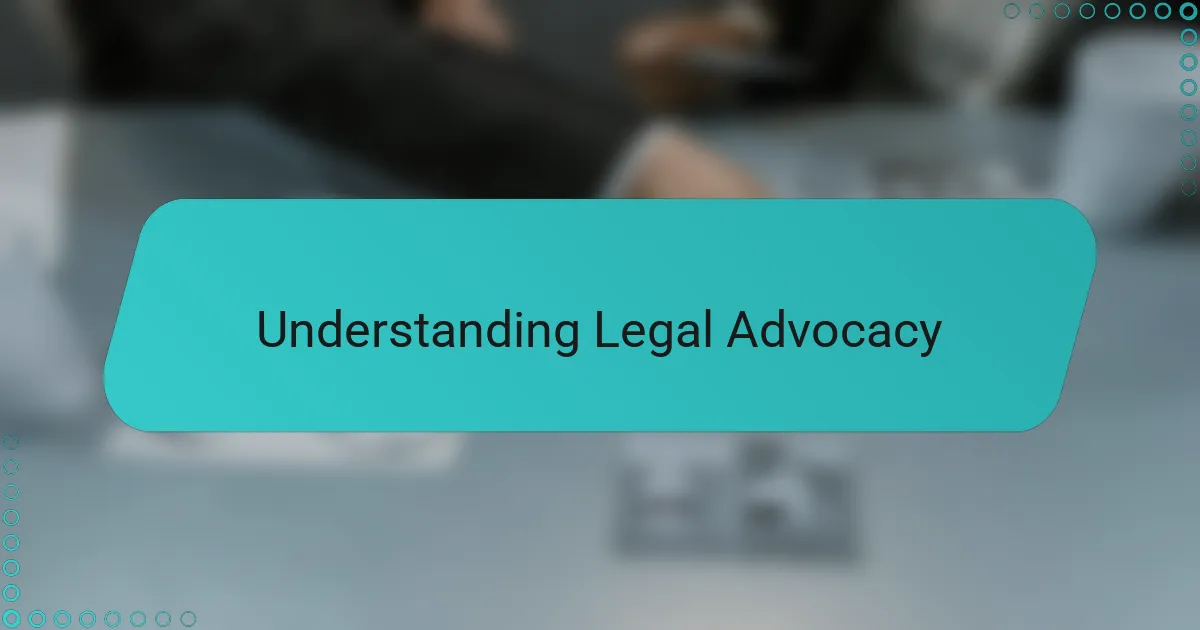
Understanding Legal Advocacy
Legal advocacy, in my experience, is much more than just navigating statutes and courtroom procedures; it’s about giving a voice to those who often go unheard. Have you ever noticed how legal terms can feel intimidating? I’ve seen firsthand how breaking down these barriers can empower people to stand up for their rights.
When I first got involved, I was struck by the passion advocacy groups bring to legal challenges. It made me realize that advocacy is as much about heart and persistence as it is about legal knowledge. What drives someone to keep pushing against injustice even when the odds seem overwhelming? To me, that question captures the true essence of legal advocacy.
I’ve learned that understanding legal advocacy means recognizing the human stories behind the cases. It’s a reminder that every legal battle is not just about laws but about real lives affected by those laws. This perspective has shaped how I approach partnerships and why I value the role of advocacy groups so deeply.
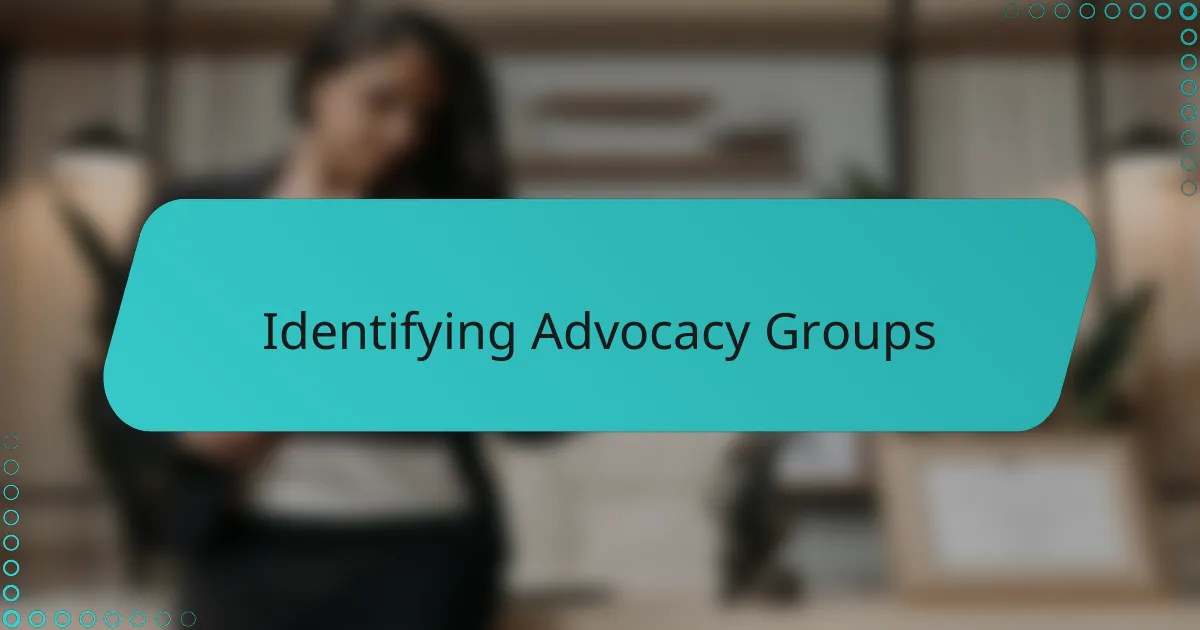
Identifying Advocacy Groups
Finding the right advocacy groups felt like searching for allies who truly understood the nuances of the issues I cared about. I remember reaching out to several organizations before discovering those whose missions aligned perfectly with the causes I wanted to support. Have you ever experienced that moment when you connect with a group and instantly feel a shared sense of purpose? That feeling told me I was on the right path.
I found that identifying effective advocacy groups required more than just reading mission statements; it meant listening to their stories and witnessing their impact firsthand. For example, attending community meetings and events revealed the passion behind their work, which no website could fully capture. This approach gave me confidence that these groups were not only active but deeply committed to meaningful change.
Sometimes, the most valuable insight came from asking peers or experts in the field for recommendations. Who better to guide you toward trusted advocates than those already immersed in the legal community? Over time, this network helped me narrow down the groups that could become genuine partners rather than mere contacts. It’s these connections that turned advocacy from an abstract idea into a collaborative effort.
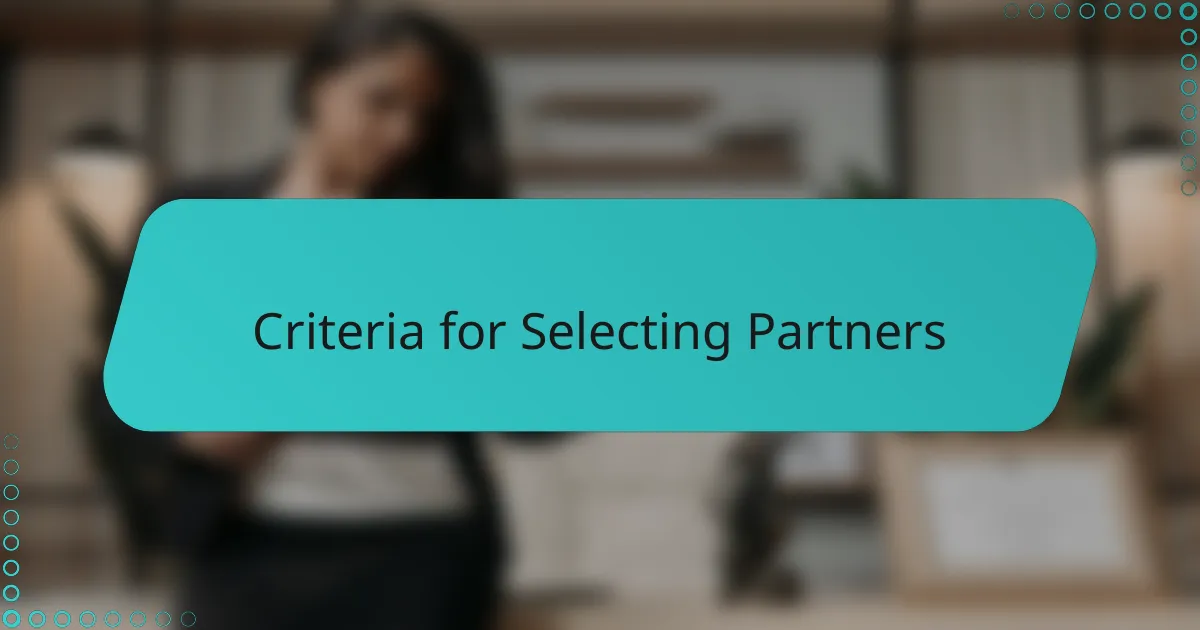
Criteria for Selecting Partners
Choosing the right partners isn’t just about matching goals on paper; it’s about finding shared values that resonate deeply. I’ve found that when a group’s commitment feels authentic, it sparks a collaboration that goes beyond formal agreements. Have you ever worked with someone where the passion simply clicked? That’s the kind of alignment I look for.
I also pay close attention to the group’s track record. Are they consistently making an impact, or is their involvement more occasional? In one memorable case, I partnered with a group whose persistent efforts had already shifted local policies, which gave me confidence that our partnership would yield real results.
Trust plays a huge role too. I always ask myself: Can I rely on this group during challenging moments? A partner who communicates openly and stands firm when obstacles arise becomes invaluable. From my experience, these qualities turn partnerships into lasting alliances.
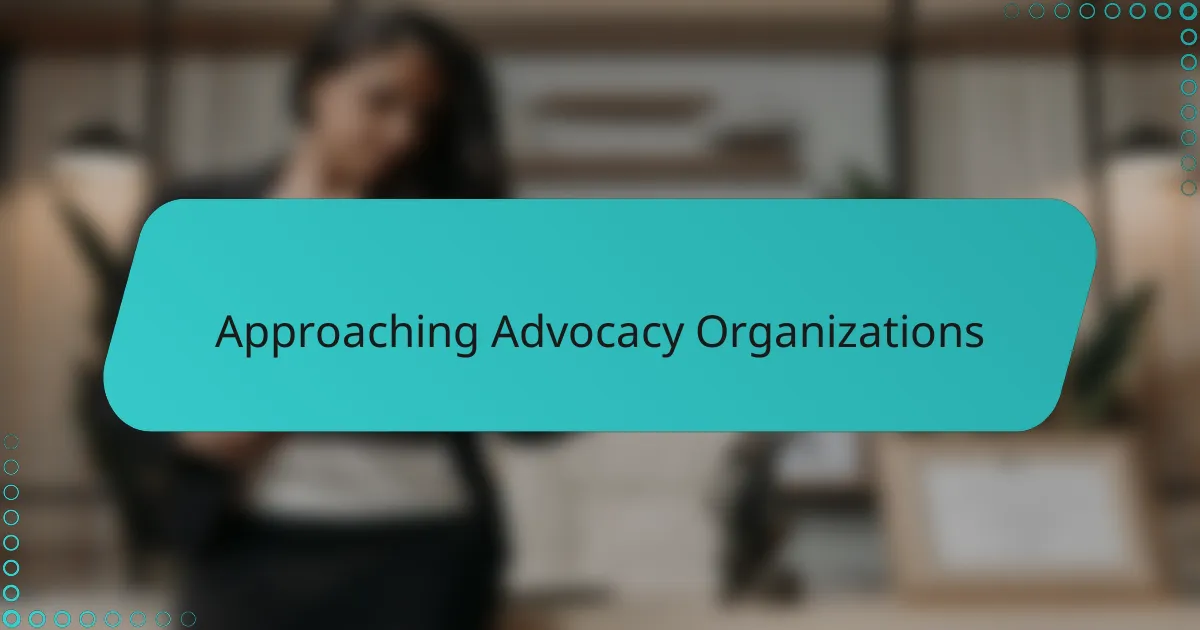
Approaching Advocacy Organizations
Approaching advocacy organizations felt like stepping into a new world where every interaction mattered. I remember the first time I reached out—I was both excited and nervous, wondering if my request would even be heard. Have you ever hesitated before making that initial connection, unsure if your intentions would resonate? For me, being genuine and clear about my goals made all the difference.
What surprised me was how open many groups were to conversations, even when schedules were tight. I quickly realized that showing respect for their time and mission built trust right from the start. One particular call stands out: instead of rushing, I asked questions about their current challenges, which shifted the tone from transactional to collaborative instantly.
Sometimes, it’s easy to assume organizations prefer formal emails or proposals, but I found that a personal touch—like a phone call or an in-person visit—often opened doors more effectively. Have you noticed how taking that extra step sometimes breaks down barriers? I’ll never forget how a brief coffee meeting turned into a long-standing partnership because we connected on both professional and personal levels.

Building Collaborative Relationships
Building collaborative relationships, in my view, starts with genuine listening. I’ve learned that when I take the time to understand an advocacy group’s priorities and challenges, it creates a foundation of respect that goes beyond formal agreements. Have you ever felt how much easier cooperation is when everyone’s voice is truly heard?
Trust is another key ingredient. From my experience, partnerships thrive when both sides are transparent about their capacities and limitations. There was a moment early on when a candid conversation about available resources prevented misunderstandings and instead strengthened our resolve to work together effectively.
Finally, I believe that flexibility keeps these relationships alive. In my collaborations, I’ve seen how adapting plans to accommodate evolving needs builds resilience. Have you noticed how partnerships that embrace change tend to last longer and achieve more meaningful impact? That adaptability, combined with shared commitment, turns colleagues into true allies.
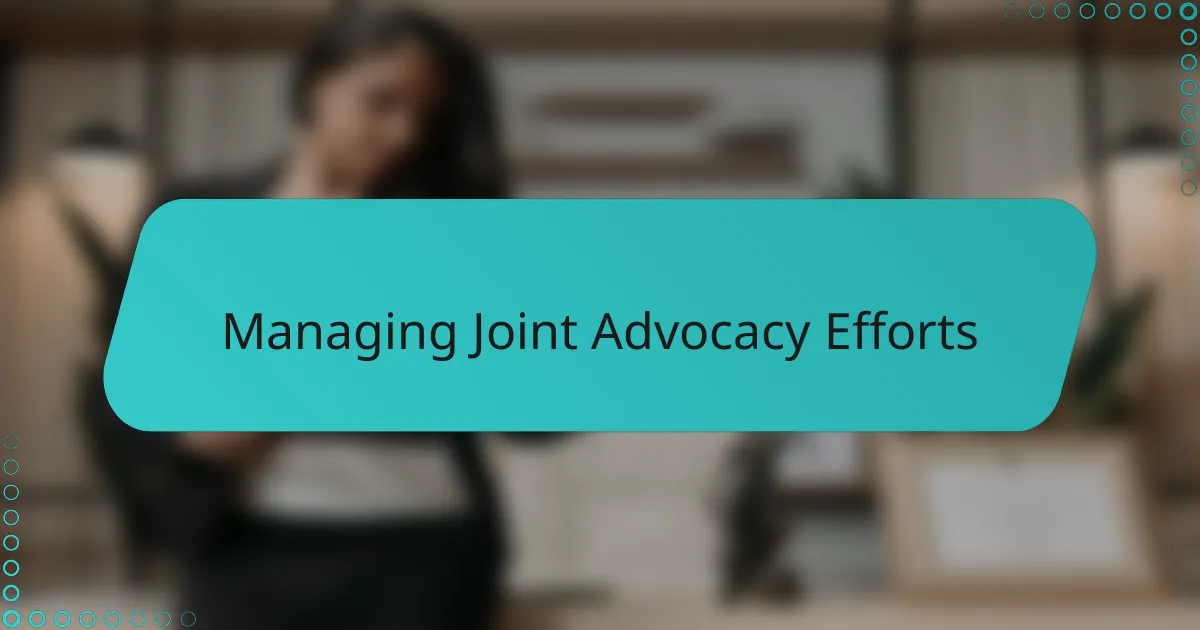
Managing Joint Advocacy Efforts
Managing joint advocacy efforts demands clear communication from the start. I’ve found that setting shared goals together helps prevent misunderstandings down the line. Have you ever jumped into a project only to realize later that everyone was playing from different rulebooks? It’s tough, but outlining expectations early makes collaboration smoother.
Another aspect I’ve come to value is assigning roles based on each group’s strengths. When partners take ownership of specific tasks aligned with their expertise, the work flows more naturally and effectively. In one instance, our team’s legal analysis paired perfectly with another group’s grassroots outreach, creating a balance that amplified our impact.
Finally, staying flexible and keeping an open dialogue really makes a difference. Challenges always arise—deadlines shift, resources tighten—but when everyone feels comfortable raising concerns and adjusting plans, the partnership stays strong. Isn’t it reassuring to know you’re working with people who won’t just stick to a script, but who truly adapt alongside you?
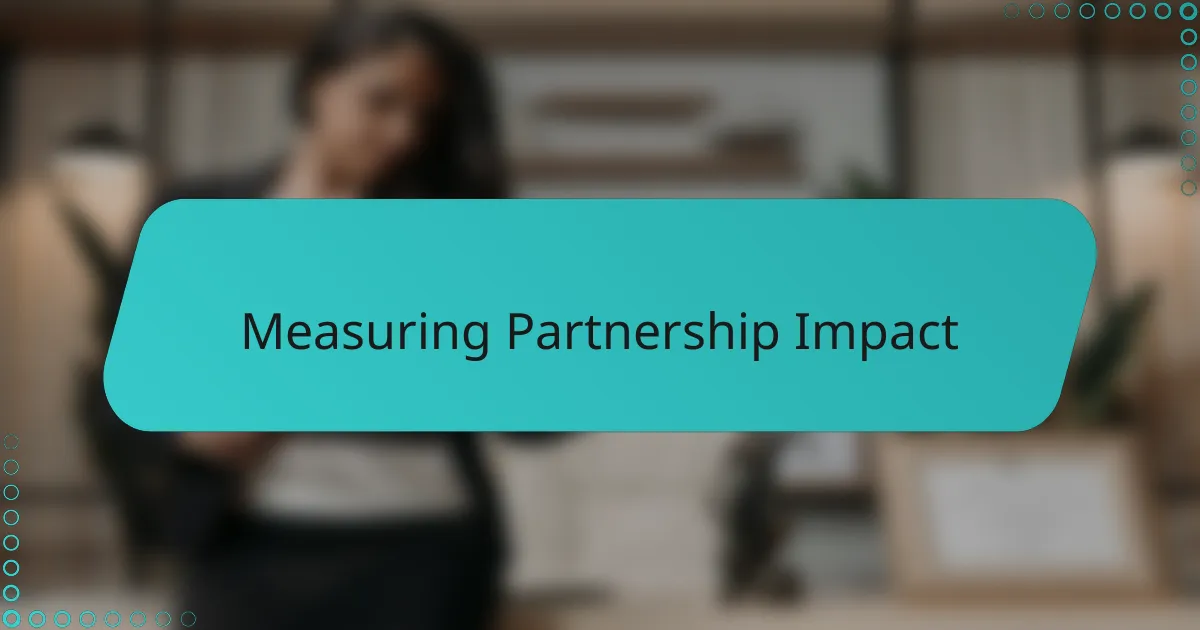
Measuring Partnership Impact
Measuring the impact of a partnership with advocacy groups has always felt like trying to capture something both quantitative and deeply human. I remember after a major campaign, we reviewed the numbers—policy changes influenced, community members reached—but what struck me most was hearing firsthand from people whose lives had genuinely changed. Doesn’t that kind of feedback make all the statistics come alive?
I also think about the importance of setting clear, shared benchmarks from the beginning. In one collaboration, we agreed on specific goals like increasing access to legal resources by a certain percentage. Tracking these markers made it easier to see progress, but it was the ongoing conversations that revealed the true depth of our impact—sometimes in ways no spreadsheet could show.
Have you ever wondered how you balance hard data with the stories behind that data? From my experience, the most meaningful measurement blends both. It’s about numbers, yes—but also about trust, growth, and that quiet sense of moving closer to justice together. That’s what partnership impact truly feels like.
